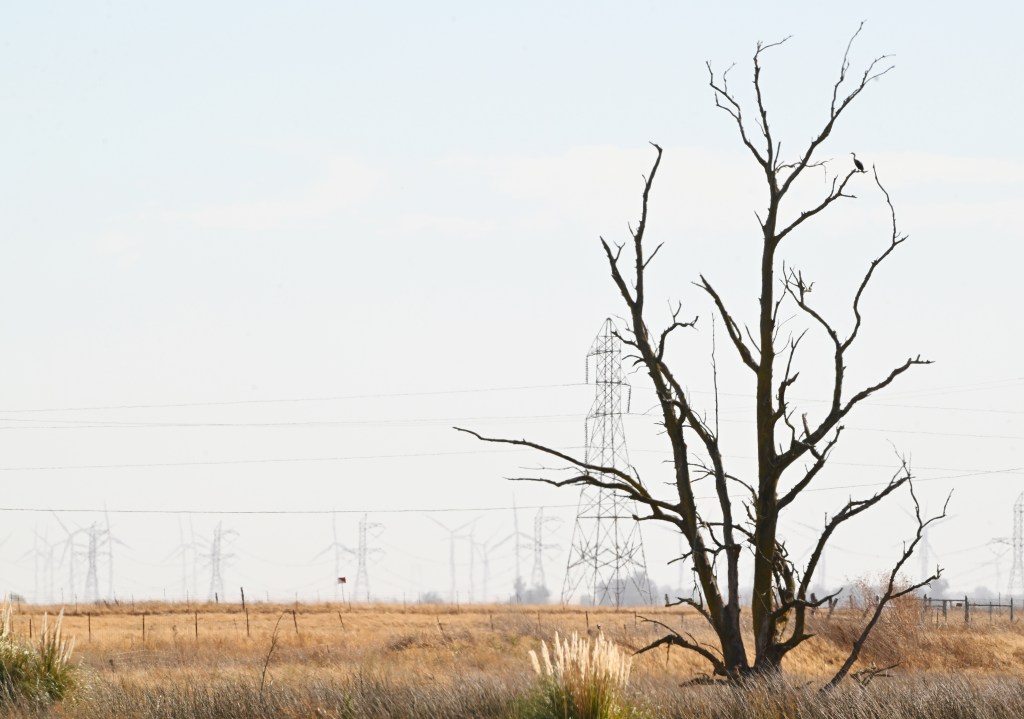Solano Together, a coalition opposed to California Forever’s East Solano Plan, hosted an environmental panel Wednesday evening with speakers from the Audubon Society and California Native Plants Society.
Nate Huntington of Greenbelt Alliance hosted the meeting for the organization and introduced the panelists. Huntington noted that the group is not opposed to housing, but would like to see responsible development that does not impact the environment.
“Our general position is that we need more housing … but it should be in the right places,” Huntington said, noting that the Greenbelt Alliance prefers to see development in existing cities.
Huntington said the area owned by California Forever is home to multiple rare species, dry land farming and ranching of cattle and sheep, and the Pacific Flyway. California Forever has previously noted its intent to expand the protected area in the community, steering clear of the unique habitats of the Jepson Prairie and Montezuma Hills.
“We see housing as a solution to some of our climate challenges if it’s done in the right way,” Huntington said of Greenbelt Alliance.
Mark Stephenson of the Napa Solano Audubon Society and Nick Jensen, Director of the Conservation Program of California Native Plants Society were the primary presenters of the evening. Jensen said it was refreshing and inspiring to be a part of a locally led effort through Solano Together.
“This is an important place for habitats and rare plants,” Jensen said of Jepson Prairie, noting that the area is historically native land currently held by the Solano Land Trust.
Jensen said that the area recommended for development is adjacent to marshes and wetlands, and many core conservation areas are owned by California Forever.
“Areas that Flannery owns that are not today proposed as areas for development could be affected,” he said, “basically this is a regional threat.”
Jensen said there are 10 rare animals, eight rare plants and three sensitive habitats on the CF site, and described plants currently on the project site as “in peril.”
“The data that we have available is likely a subset and an underestimate of what is truly there,” he said.
Stephenson said the Audubon Society connects with thousands of students in Napa and Solano each year to educate them on conservation, He noted that burrowing owls are common in the area, as well as mountain plovers and tricolor blackbirds. The area is also home to the Swinson Hawk, he said which breed in the area as well as hunts there.
Princess Washington, Vice Mayor of Suisun City and chair of the Solano County Sierra Club, expressed logistical concerns regarding the area, including water rights, air quality and traffic.
‘Washington claimed the county is in a housing boom, and that each community in the county had met their RENA numbers.
“We have to keep in mind the history of our agricultural community and how they have been really in the forefront,” she said.
Washington also opposed agricultural offsets through the use of vertical farms, as advocated for at a recent Solano County Board of Supervisors meeting.
“That cannot take the place of graze farming,” she said. “That is a vital resource in Solano County.”
Washington said that Solano Together is working to create a unified vision for Solano County.
“A lot of the time environmentalists will just say no, but now environmentalists are saying yes,” she said.
Washington did acknowledge that California Forever ultimately retains considerable power regardless of the concerns of locals.
“We have to keep in mind this land is privately owned there,” she said, “and so outside of a zoning change, we really don’t have that much of a say.”
Solano County’s impact report on California Forever notes that the plan, as written before the ballot initiative was pulled, did not outline workarounds if environmental issues arose.
“The Initiative does not specifically address obligations of the proponents to make changes to the plan if, for example, a significant environmental impact is identified,” the report reads. “As a result, the Initiative places the voters in a difficult position because they will not have available the type of important site-specific environmental information typically available.”
